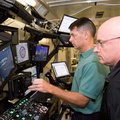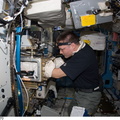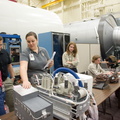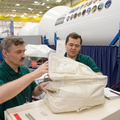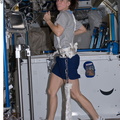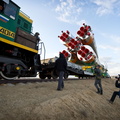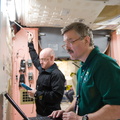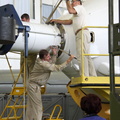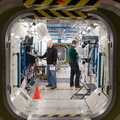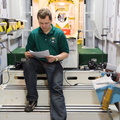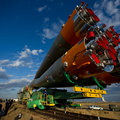
WIKIARCHIVES.SPACE
The Human Spaceflight Archive

Information
- Taken in
- Space
- المؤلف
- NASA
- Description
- Nevado Coropuna, Peru is featured in this image photographed by an Expedition 25 crew member on the International Space Station. Nevado ("snowy" or "snowy peak" in Spanish) Coropuna is the highest volcanic peak in Peru -- the summit elevation is 6,377 meters above sea level. Rather than being a single stratovolcano, Coropuna is a volcanic complex of numerous summit cones. The complex covers an area of 240 square kilometers within the Ampato mountain range (Cordillera Ampato) in southeast-central Peru. While the exact date of the volcano's last eruption is not known, lava flows (black, at center and upper left) along the northern, southern, and western flanks of the complex are thought to have been emplaced during the early Holocene Epoch -- the current geologic time period which began approximately 12,000 years ago, according to scientists. Coropuna also hosts several summit glaciers and icefields (white to gray, center) that contrast sharply with the dark rock outcrops and surface deposits at lower elevations. Glacial deposits and lateral moraines on the flanks of Coropuna indicate that glaciers once extended to much lower elevations than are observed today. Scientists believe that careful mapping and surface exposure age-dating of these glacial deposits and landforms provides data on the timing of ice advances and retreats in the tropics near the end of the Pleistocene Epoch (extending from approximately 2.5 million to approximately 12,000 years ago). In turn, this information can be compared with other paleoclimate records to obtain a better understanding of how Earth's global climate has changed over geologic time.
- تم إنشاؤها فى
- الأربعاء 6 أكتوبر 2010
- ألبومات
- ISS (WIP) / EXPEDITIONS / EXPEDITION 25
- Source link
- https://www.flickr.com/photos/nasa2explore/albums/72157627449760734
- زيارة
- 21
- درجة تصنيف
- لا يوجد تقيم
- قيم هذه الصورة
- License
- CC BY-NC-ND
- Modified by WikiArchives
- No (original)
- Downloads
- 0
EXIF Metadata
NIKON CORPORATION NIKON D2Xs
- Make
- NIKON CORPORATION
- Model
- NIKON D2Xs
- DateTimeOriginal
- 2010:10:06 17:50:30
- ApertureFNumber
- f/9.5
مدعوم من Piwigo
































